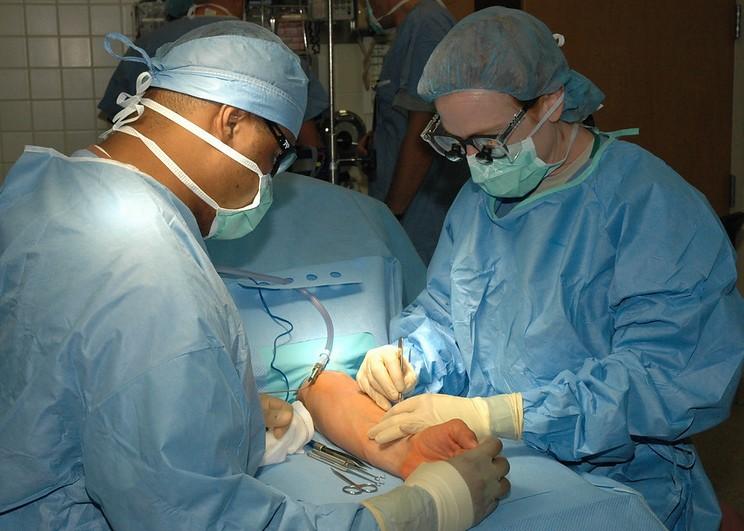Three new studies describe how the COVID-19 pandemic cratered the finances of many US hospitals, one finding that most federal relief funds went to the already best-resourced facilities and the other two showing the devastating monetary effects of delaying or canceling surgeries.
Wide disparities in fund allocation
In a study published late last week in JAMA Health Forum, RAND Corp. researchers traced High-Impact Distribution Coronavirus Aid, Relief, and Economic Security (CARES) Act funding to 952 hospitals. Data, which were taken from hospital cost reports in the Healthcare Cost Report Information System, were analyzed from December 2020 through June 2021.
The researchers identified wide disparities in fund allocation, with 23.6% of matched hospitals receiving less than $5 million, 22.1% receiving $5 million to $10 million, 26.3% receiving $10 million to $20 million, 11.4% receiving $20 million to $30 million, 4.6% receiving $30 million to $40 million, and 7.8% receiving more than $50 million.
Because some payments were so large, the average CARES payment was $33.6 million, $22.1 million of which was allocated during the first of two rounds of payments.
Teaching hospitals that had more assets before the pandemic—as well as those that cared for the most COVID-19 patients—received the most funding, while critical-access hospitals received the least. After accounting for differences in patient composition and number of patients released from the hospital, a 10% increase in hospital assets, endowment size, and COVID-19 patients was tied to a 1.4%, 0.2%, and 3.5% rise, respectively, in CARES funding.
Nonprofit hospitals received 13% more CARES Act assistance than other hospitals, while academic hospitals received 42% more funding, and critical access hospitals received 40% less assistance.
'Unclear how these funds were targeted'
"This disparity in funding may be of particular interest because many critical access and rural hospitals faced financial pressures even before the COVID-19 pandemic," the researchers wrote. "Policy makers should continue to ensure that these types of hospitals are sufficiently funded, potentially with additional rounds of funding."
The researchers noted that primary hospital admissions fell 20% after the onset of the pandemic in February to April, 2020 and then rose 4% by early July. The suspension of elective care in many states, as well as declines in care-seeking fueled by patient fears of infection, likely led to the substantial decline in hospital revenue.
In response, many hospitals may have had to furlough employees or cut salaries, the latter of which accounted for roughly 41% of hospital operating costs before the pandemic. About one third of operating costs were from operating rooms, labs, diagnostic radiologic services, routine inpatient care, intensive care units, emergency departments, and outpatient clinics.
To help offset hospital financial losses, the CARES Act gave funding, including increased Medicare payments, to eligible healthcare providers. As of May 31, 2020, $65.2 billion had been disbursed in 380,000 payments to hospitals and health professionals, $22 billion of which were sent to more than 1,000 hospitals in COVID-19 hot spots.
A Centers for Medicare & Medicaid Services formula determined payout amounts based on each hospital's proportion of fee-for-service Medicare payments out of total 2019 Medicare disbursements and the facility's most recent annual gross receipts.
CARES Act funds were meant to help hospitals that took especially big financial losses during the pandemic, as detailed in documented reductions in care volumes, the authors said. "However, it is not clear if historical measures of Medicare payments are the most appropriate indicator for hospital financial assistance need," they wrote.
"It is unclear how these funds were targeted to hospitals in relation to their pre–COVID-19 finances, which is an important policy question to inform future resource allocations."
Losses reveal need for long-term planning
Postponement of elective surgeries early in the pandemic torpedoed hospital incomes, according to an American College of Surgeons (ACS) press release describing the results of two studies presented at its virtual clinical congress last week.
A University of Pennsylvania at Philadelphia study found that the suspension of elective surgeries from mid-March to July 2020 cost one healthcare system 42% of its net revenue, at a loss of about $636,952 per month.
In the other study, Children's Hospital of Philadelphia researchers used the 2016 Kids' Inpatient Database to estimate that US children's hospitals lost $1.53 billion from the delay or cancellation of more than 51,000 elective pediatric surgical procedures from March to May 2020.
The researchers said that the study results reveal the need for more robust long-term planning to prevent further surgical postponements, which can worsen patients' medical conditions, negatively affect quality of life, lead to early death, and require even more treatments to recover—ultimately raising overall healthcare costs.
"Our message isn't all about revenue," Sourav Bose, MD, MBA, lead author of the second study, said in the release. "Hospital systems must assess their operations management strategies to optimize the availability of surgical resources for patients with the greatest need."
The authors recommended that hospitals increase hospital beds and resource capacity by sending "overflow" surgical patients to other patient care units or facilities, triaging elective surgeries according to ACS guidelines, ensuring adequate personal protective equipment for healthcare workers and patients, mandating that staff be vaccinated against COVID-19 or submit to frequent testing, and increasing surgical capacity by using strategies such as expanding hours.



















